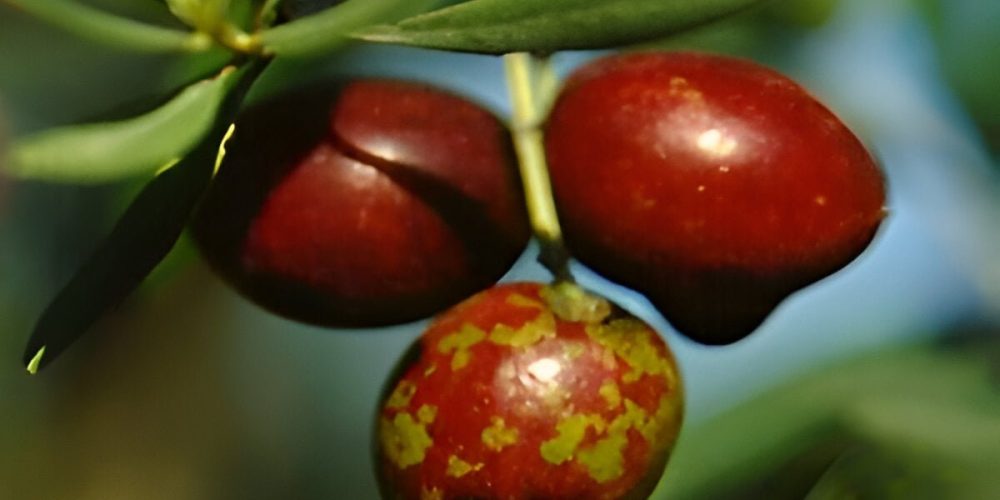Table of contents of the article
TogglePeacock eye spot on olive leaves (olive scab) is a fungal disease that affects olive leaves, weakening the trees' ability to produce. This article from the “WORLD OF PLANTS” website reviews effective prevention and control methods.
Symptoms of peacock eye spot on olive leaves (olive scab)
- Scientific name : peacock spot of olive
- The causative fungus This disease is caused by the fungus Spilocaea oleaginea Hug. (Cast)
- Dark green or black circular spots appear, mainly on leaf blades. Complete yield loss of some susceptible varieties can occur in certain climate zones.
- The pathogen also infects fruit and fruit stems, but lesions are most often observed on the upper leaf surfaces
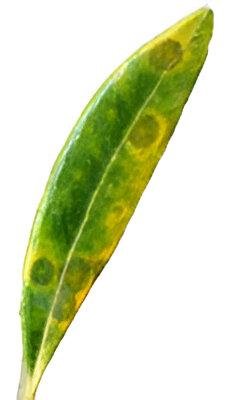
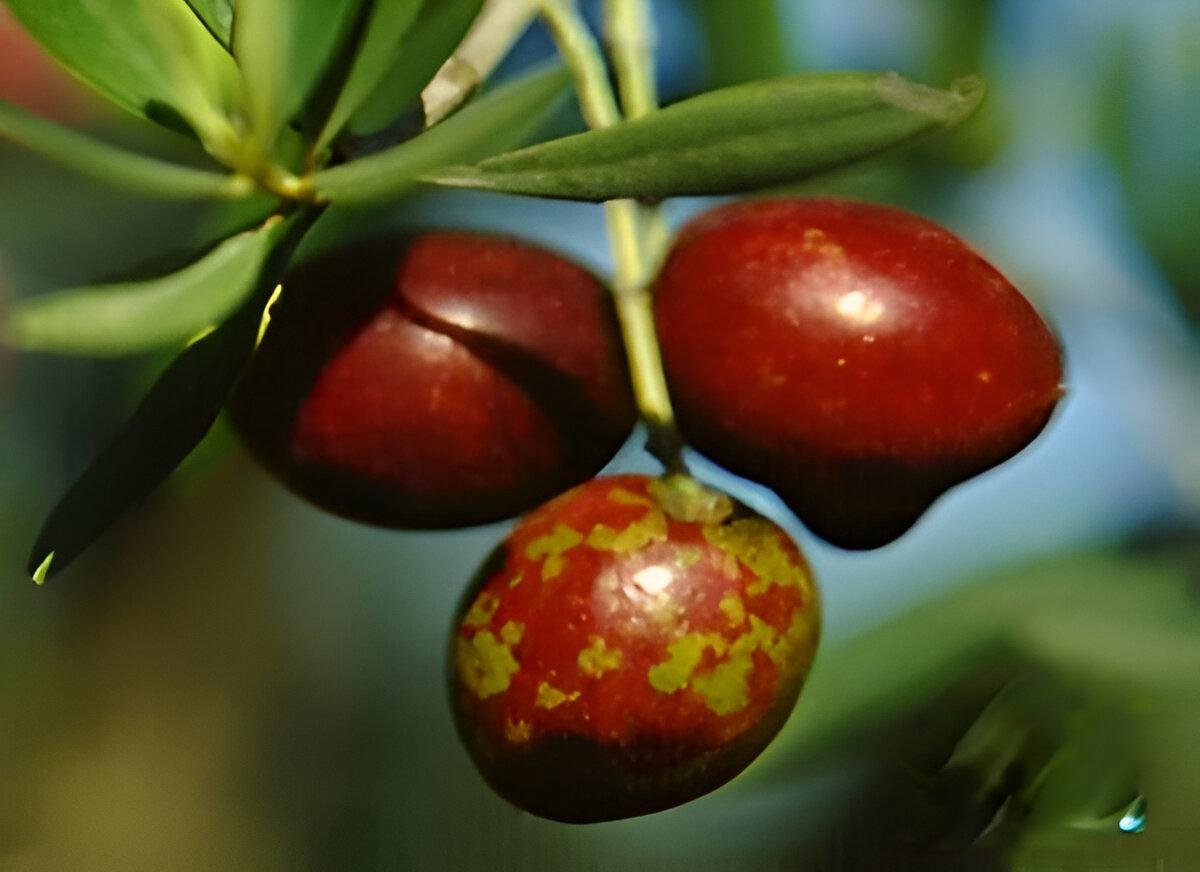
Causes of peacock eye spots on olive leaves (olive scab)
High humidity is a reason for the spread and development of the causative fungus
Suitable conditions for the spread of peacock eye spot on olive leaves (olive scab)
Infection is usually associated with high humidity (such as rainfall) and winter conditions (cold, low light). High temperatures restrict spore germination and growth, making the disease inactive during the summer.
Development cycle of peacock eye spot on olive leaves (olive scab)
- Spots first appear on the leaves in winter. These spots develop into greenish-black circular spots up to 6 mm in diameter. There may be a pale yellow halo around the area... The lower branches and south side of the tree will be more susceptible to infection than the upper sections. This is thought to be due to fungal spores growing faster in shady, damp and cool conditions as they do at the bottom of the tree and on the south side away from the sun.
- One or more large, round spots will appear on the leaf, and sometimes the spots will merge with each other.
- Most infected leaves will fall prematurely by summer. The few diseased leaves that remain on the tree over the summer will become crusty and white. As the weather cools in the fall, a new crop of spores is produced and spreads through the tree's leaves.
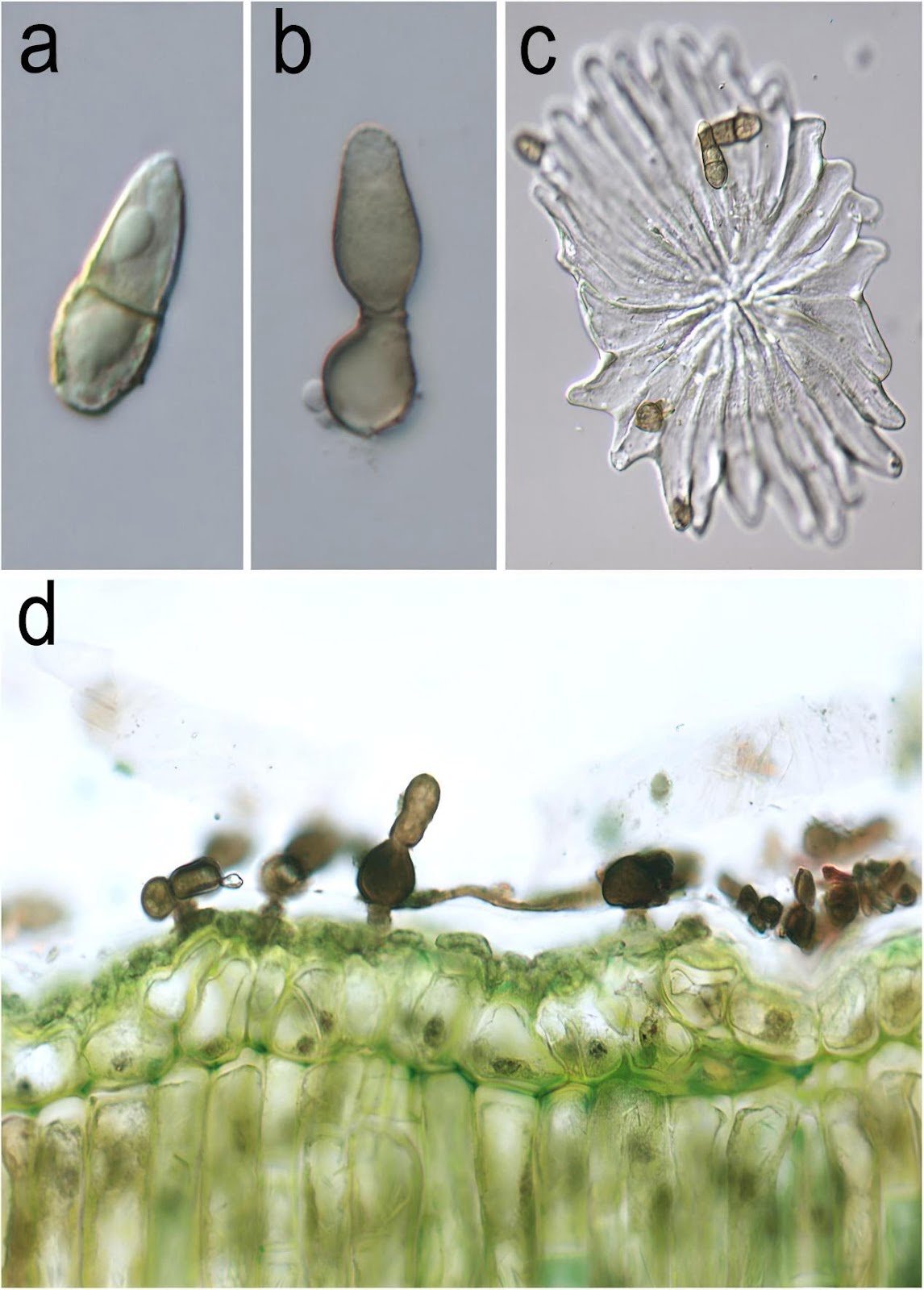
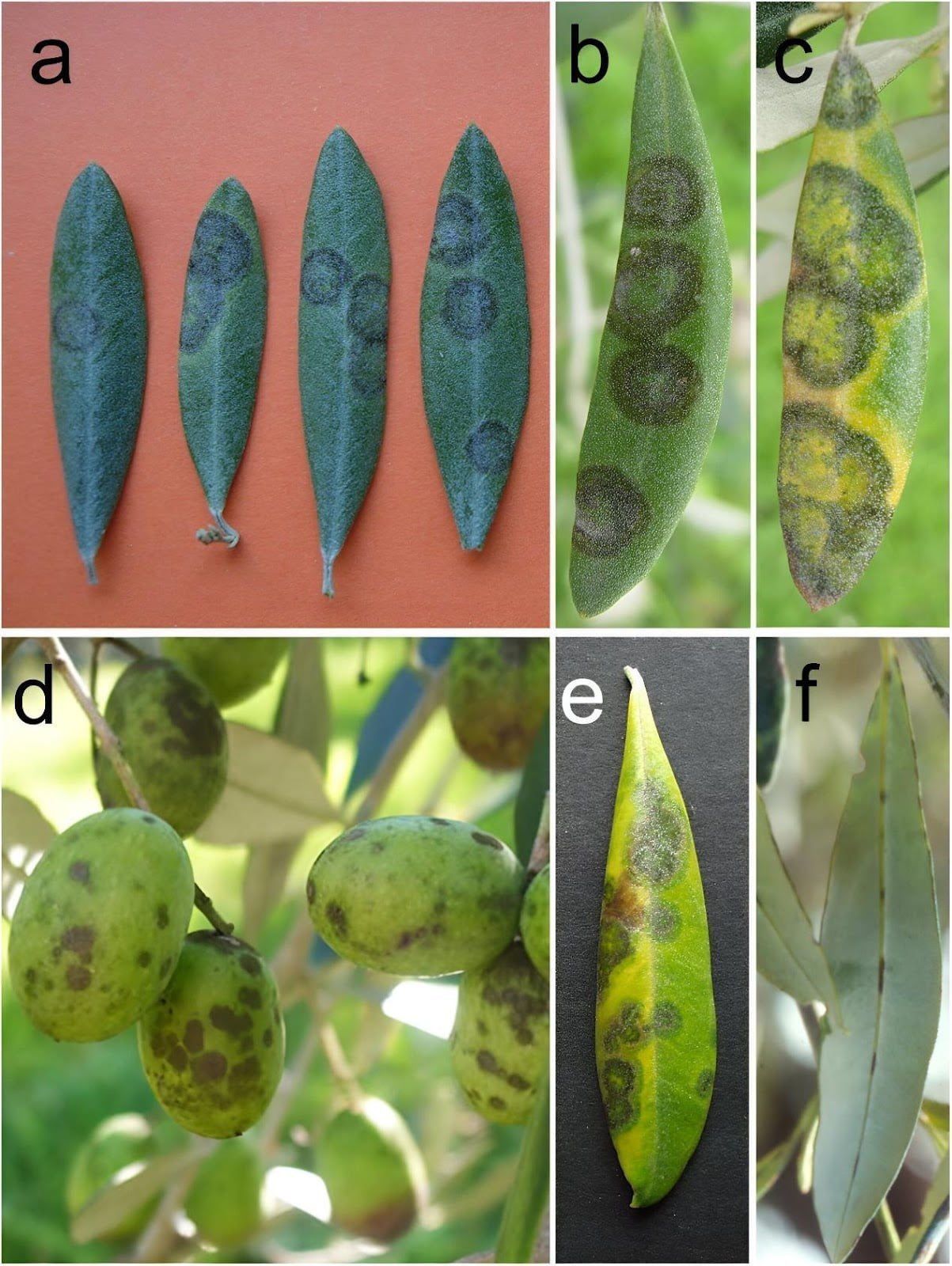
Losses of the spread of peacock eye spot on olive leaves (olive scab)
- Significant leaf fall, vigorous growth fails and crop production is significantly reduced. Shoot dieback may occur as a result of defoliation, ultimately reducing productivity further
- The most devastating diseases of olive trees, leading to losses that may reach 20% of the crop
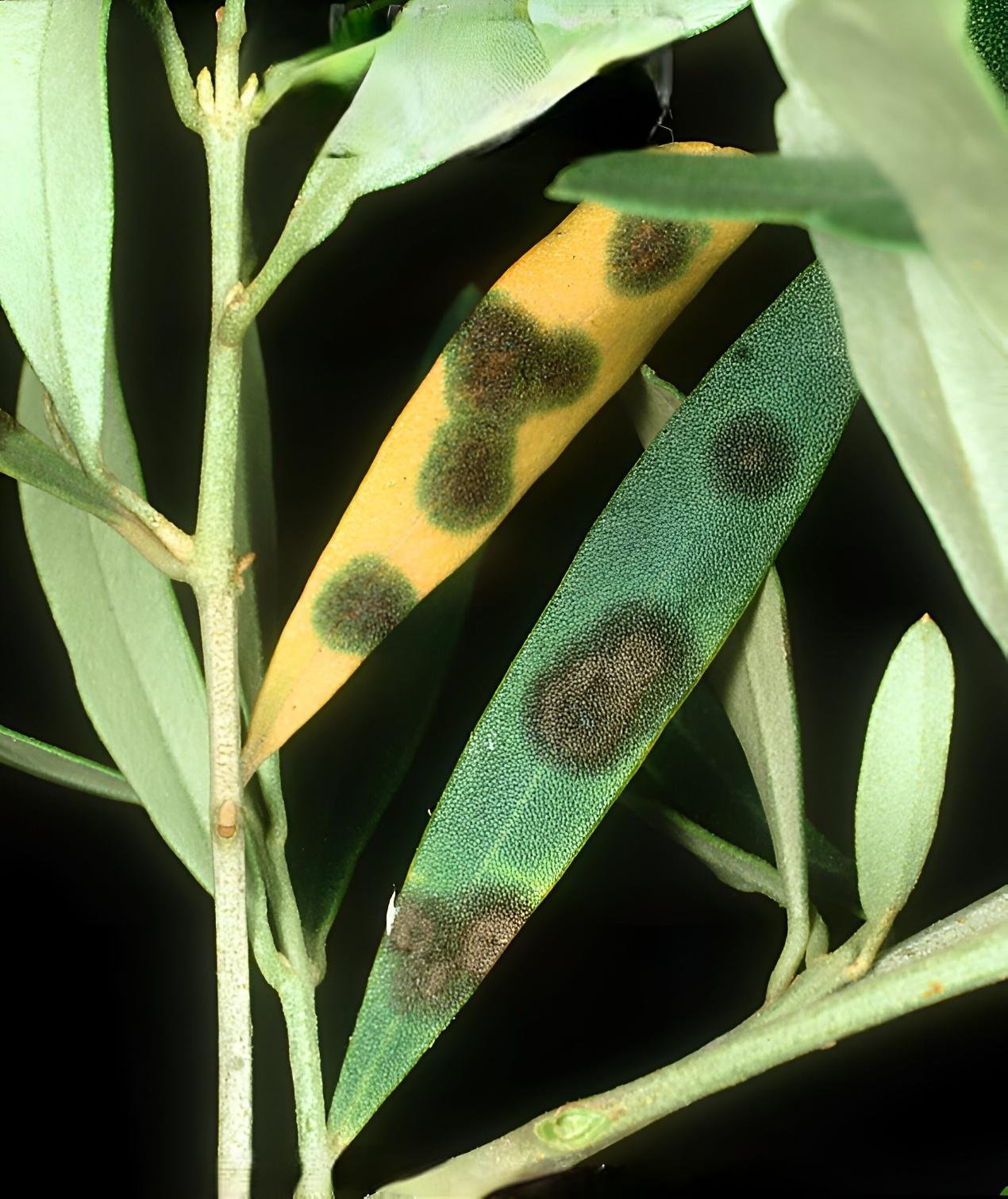
Strategy to combat peacock eye spot on olive leaves (olive scab)
Preventive measures to prevent the occurrence of peacock eye spot disease on olive leaves (olive scab)
- Cultivation of resistant varieties such as Koroniki, Frantoyo, Coratina, Manzanilla de Sevilla, Lechine de Sevilla, Picoline, Mastoides, Luke, Ciprisino, Cailletiere, Baladi, Valanonia, Oblonga, Corfolia, Chalcidikis, Megaron, Patrini)
- Avoid placing trees in areas where air circulation is poor
- Pruning to give a more open canopy will also improve air circulation, lower humidity and ensure leaves dry more quickly after rain. However, avoid pruning too heavily as this may result in the production of fruitless buds.
Chemical and organic control recommendations
- Studies have shown that the strobilurin group of fungicides studied provided the necessary efficiency in combating the damage of peacock spot disease in conditions of severe infection.
- A preventive spray must be carried out at the end of autumn before the rains begin. Its purpose is to cover the leaves with fungicides during the period in which the conidial spores begin to grow and reproduce to avoid infection occurring when the rains fall. Spraying is repeated again at the end of winter, especially in areas where warm winters and rainy springs prevail.
- Copper compounds are among the best pesticides to combat the disease.
In conclusion, we would like to note that we, at the world of plants website, offer you all the necessary services in the world of plants, we provide all farmers and those interested in plants with three main services::-
- Artificial intelligence consulting service to help you identify diseases that affect plants and how to deal with them.
- Blog about plants, plant diseases and care of various crops ... You are currently browsing one of her articles right now.
- An application that provides agricultural consultations to clients, as well as a service for imaging diseases and knowing their treatment for free – Click to download the Android version from Google Play Store، Click to download the IOS version from the Apple App Store.
References
- , Shamsollah, et al. “Evaluation of the relative resistance of different olive cultivars to olive peacock spot disease caused by Venturia oleaginea.” Journal of Plant Diseases and Protection 130.2 (2023): 361-369.
- Najafi, S., Saremi, H., Jafary, H., & Aminian, H. (2022). Evaluation of the effectiveness of different fungicides and determination of the best spraying times in the control of olive peacock spot disease in the Tarom region of Zanjan province. Journal of Applied Research in Plant Protection, 11(2), 17-26
- COLLINS, G., et al. IDENTIFICATION OF A RAPD MARKER LINKED TO TOLERANCE TO PEACOCK DISEASE (Spilocea oleaginea) IN OLIVES (Olea europaea). In: International Symposium on Molecular Markers for Characterizing Genotypes and Identifying Cultivars in Horticulture 546. 2000. P. 565-567.
- Evaluation of the relative resistance of different olive cultivars to olive peacock spot disease caused by Venturia oleaginea – researchgate
- IDENTIFICATION OF A RAPD MARKER LINKED TO TOLERANCE TO PEACOCK DISEASE (Spilocea oleaginea) IN OLIVES – actahort
- What is Peacock Spot in Olives? – Amanda Bailey on Olives




